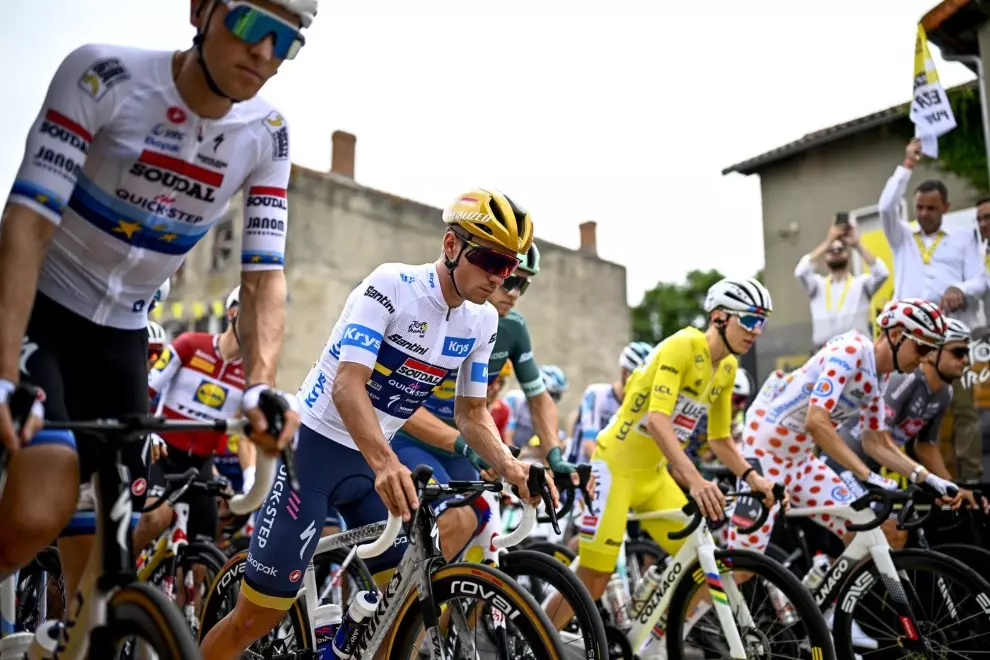Early days: Adventuring pioneers
In its early years, the Tour de France was a basically just a gruelling endurance test, with riders tackling long stages averaging nearly 400km per day, across treacherous terrains on road surfaces that today we’d called gravel. Unlike the neutral and team support structures we see today, riders in the early editions of the race had no assistance whatsoever. They rode individually and were responsible for their mechanical repairs, nutrition, and even navigation. This lack of support tested the riders’ physical and mental resilience, making the race even more demanding.
To starkly illustrate this, in the 1919 Tour, Frenchman Eugene Christophe was hit by a race vehicle and crashed, causing his forks to break. He then walked to a nearby town 12 kilometres away and fixed the folks at a blacksmiths forge. However, whilst he was brazing the forks together, a 7-year-old boy worked the bellows that supplied air to the furnace. This was deemed as ‘assistance’ by a race marshal who oversaw the proceedings and imposed a 10-minute time penalty on Christophe. Quite incredible.

The introduction of team support
In the 1930s, the Tour de France began to witness a shift towards team-based racing. The organisers eventually recognised the benefits of allowing teams to support their riders during the race, although this did meet with some resistance from Henri Desgrange, the infamous, formidable, race founder and director. The introduction of team assistance provided riders with a crucial lifeline, allowing them to rely on their teammates for mechanical support, supplies, and tactical strategies. This change marked a significant milestone in the evolution of the Tour de France and revolutionised the dynamics of the race.
From the points system to overall time
Not many people will know this, but during the very early years of the Tour, the race was based on a points system rather than the overall accumulated time of each rider. Points were awarded to riders based on their rankings in each stage, with the rider accumulating the fewest points being the overall leader. However, in 1913, the rules were revised to incorporate an overall time-based system, where the rider with the shortest cumulative time across all stages would be crowned the winner. This modification shifted the focus from individual stage victories to consistent performance throughout the race, adding a new layer of strategy to the Tour. Incidentally, but importantly, the first ever yellow jersey or ‘Maillot Jaune’ was first given to the leader of the race on 25th July 1919, to our earlier friend Eugene Christophe.
Team sizes and composition
Throughout its history, the Tour de France has experienced fluctuations in team sizes. Initially, there were no regulations governing the number of riders per team, resulting in teams with varying sizes. However, as the race grew in popularity and competitiveness, concerns regarding rider safety and the integrity of the race emerged. Consequently, in the 1960s, the race organisers implemented regulations specifying the maximum team size, initially set at 10 riders per team, and later reduced to 9 in the 1990s and now 8 in the present day. This limitation aimed to keep things fair competitively, while ensuring the peloton’s manageability and rider safety.
In the early editions of the Tour riders rode as individuals, representing themselves or their individual sponsors. However, from the 1930s to the 1960s, national teams dominated the race, with riders representing their respective countries. In 1962 this changed when trade teams were introduced, allowing riders to represent professional cycling teams. From then on, the Tour featured a mix of national teams and trade teams until 1969, when the national team format was abandoned. Since then, trade teams have been the standard, although there have been occasional exceptions like in 1983 when Colombia had a national team present at the race for the first time (with Luis Herrera winning Colombia’s first ever stage on Alpe D’Huez).
The Tour’s long history is interwoven with numerous rule changes that have shaped the race into the event it is today. As it continues to captivate audiences worldwide, it remains open to further rule adaptations that will no doubt help ensure its continued relevance, growth and success. The question is: what’s next for the greatest race on Earth?




